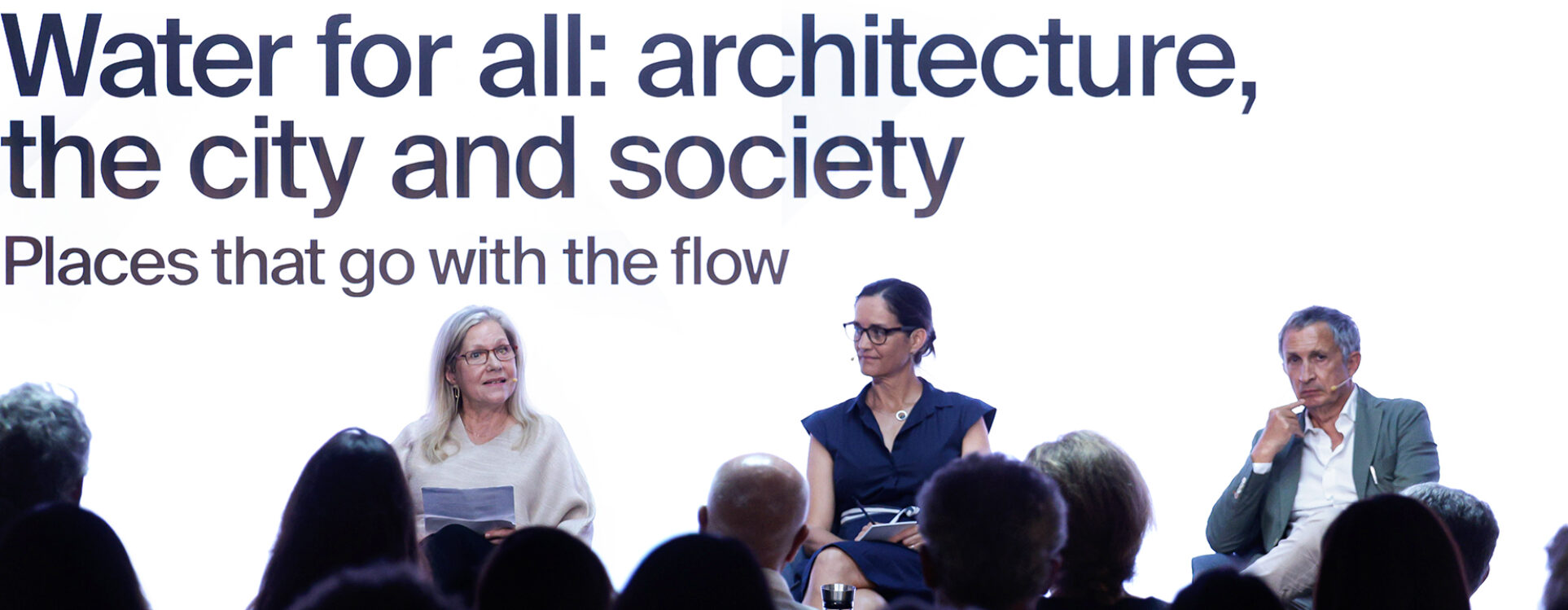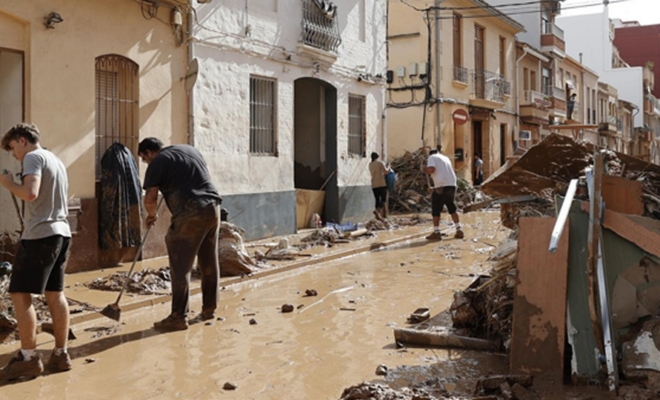Architect Martha Thorne defines the complexity of water management. This factor has become crucial in today’s urban planning: “Water carries symbolic, emotional, biological, cultural, and of course, architectural and urban significance. The intrinsic complexity of water becomes even more evident in these times of climate change and is reflected in droughts and floods, with undeniable political and economic consequences for cities.”
Thorne, former Dean of the IE School of Architecture and Design and Executive Director of the prestigious Pritzker Architecture Prize from 2005 to 2021, is currently one of the most influential voices shaping the future of cities and urban planning—a concept that is no longer a future-oriented aspiration, but a pressing need of the present. A long-time Friend of the Foundation, Thorne has spearheaded the debate series Water for all: architecture, the city and society, organized by Roca Group and the Fundación Arquitectura Contemporánea (FAC), whose first edition was held at the Roca Barcelona Gallery on June 12 (you can watch the full debate here).
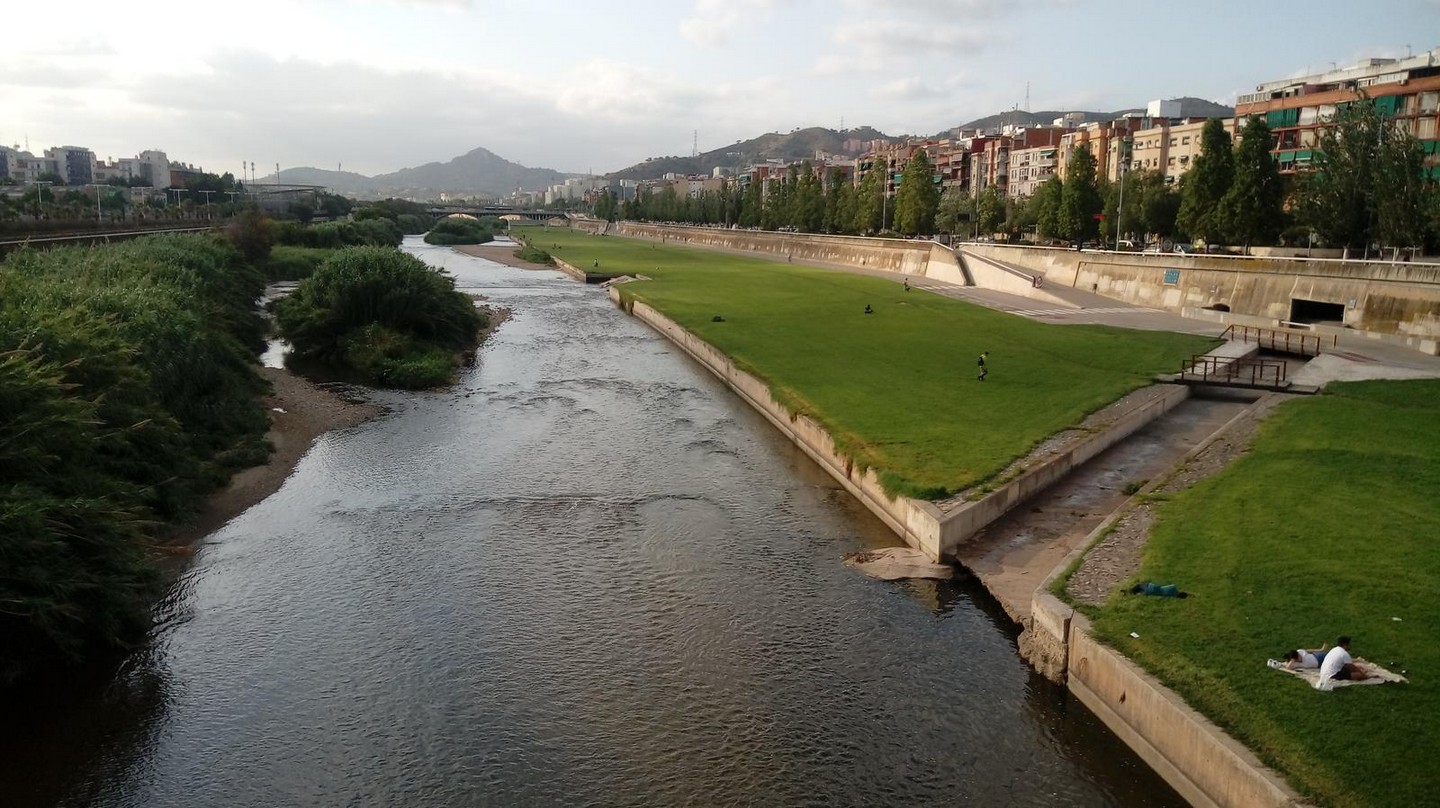
The Besòs River (Barcelona): once one of the most polluted rivers in Europe, now a rewilded metropolitan corridor where eels and otters thrive. A striking example of ecological and social transformation. © Josép M. Morè
Two leading experts in integrating water into urban planning participated in this first session: Bárbara Pons, Director General of the Barcelona Regional, and Enric Batlle, co-founder of Batlle i Roig.
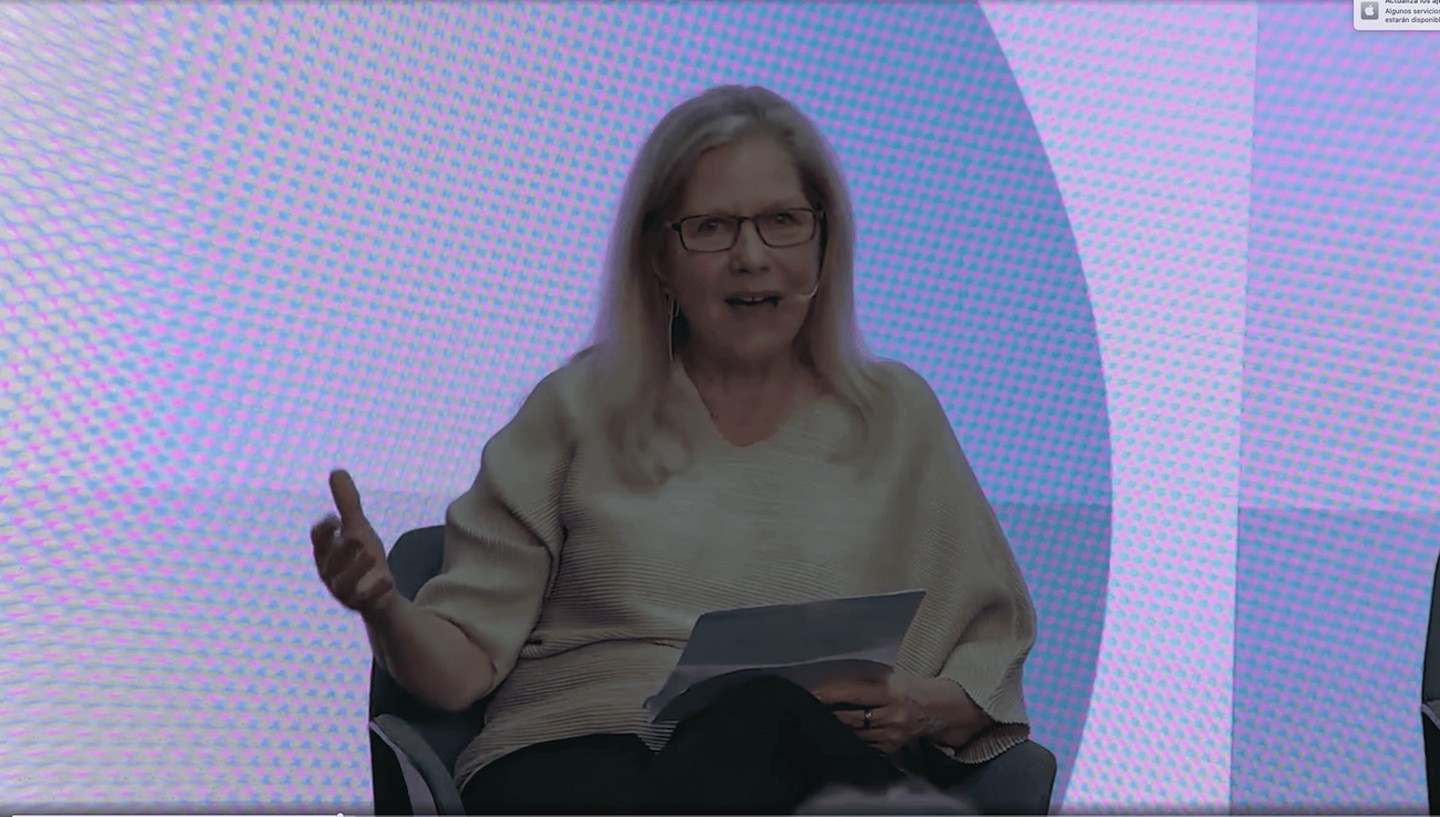
A long-time Friend of the Foundation, The renowned architect Martha Thorne has spearheaded the debate series Water for all: architecture, the city and society, organized by Roca Group and the Fundación Arquitectura Contemporánea (FAC).
Do We Know What Water Does in the City?
The conceptual shift brought about by water issues in urbanism is now globally evident. Bárbara Pons noted: “When I studied architecture in the 1990s in Valencia, nobody ever mentioned water concerning urban planning. Things are very different now. We can’t ignore water—we must integrate it into all projects.”
Pons considers a deep understanding of the water cycle essential for any urban design project: “As designers transforming urban environments, we must understand that water flow permeates everything. Knowing where water runs now, where it used to run, and where it will run is the starting point.” For Pons, green infrastructure and water are the foundation of urbanism, and trees—the ultimate natural infrastructure—must be integrated into watershed-scale planning.
This is a cornerstone of new urbanism. Enric Batlle highlighted the outdated nature of cities still based on 19th-century models, referencing parts of Barcelona that “hide” water: “The city is full of grates and drains where water vanishes underground. That’s a result of an old mindset—one that believed the faster water disappears, the better the city is designed. If it puddles, that’s a design failure. Then we need to bring in water from elsewhere to meet our needs. This logic has to change.“
The Sponge City: Letting Soil Do Its Work
Batlle is a strong proponent of the “sponge city” concept. He referred to several of his projects revitalizing roadways and roundabouts where soil plays a key role in absorbing rainwater regardless of intensity: “We must move toward a sponge city, where water moistens the soil and reaches trees first. In the spaces we’ve designed this way, trees have survived recent droughts and the soil has absorbed even the heaviest downpours. Sponge soil is beneficial both in times of drought and heavy rainfall.”
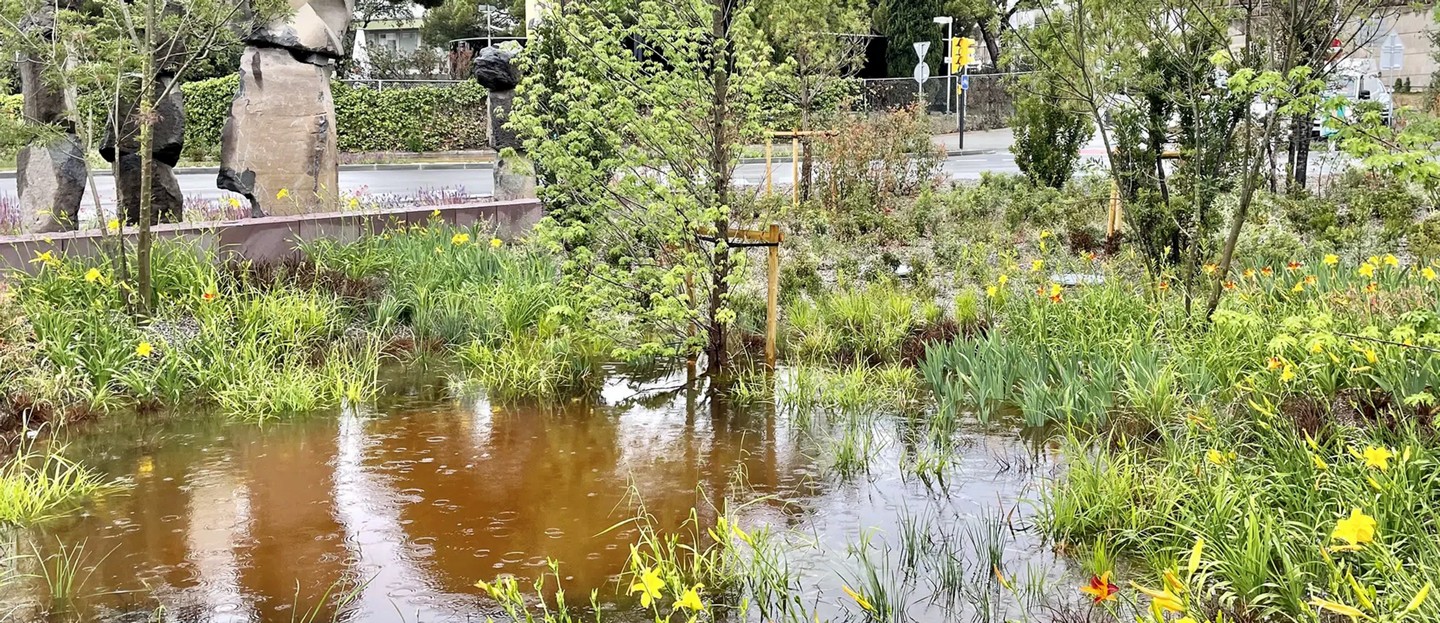
Roundabout Elisabeth Eidenbenz in Esplugues de Llobregat (Barcelona): A space once dedicated to cars is transformed into a rainwater management zone that enhances biodiversity. © Batlleiroig
Soil’s relationship with water is one of the major challenges of global urban planning. Today, concrete and asphalt cover nearly 4% of the Earth—some 4.5 million km² that once included forests, fields, rivers, and lakes. “Cities cover over ancient watercourses,” Batlle notes, a fact urban planners must recognize and communicate to both citizens and policymakers.
Water Reuse: At What Scale?
The architect emphasized that this water-conscious approach must extend to buildings: “Rooftops can collect rainwater and greywater can be treated. This can reduce water consumption to just 20% of the norm.” Efficiency also matters—he noted that toilet tanks have gone from consuming 19 litres per flush 40 years ago to just 3–4 litres today.
Turning buildings into micro water treatment plants, however, raises a question of scale: Should this approach be implemented at the individual, building, block, or neighbourhood level? Governance is key. We must avoid placing the burden entirely on citizens with difficult-to-implement regulations: “We can’t expect everyone to do it individually. It might work at the block level, but getting neighbors to agree is tough. Perhaps neighborhood organizations could manage rooftop water and recycling systems. We must act at all scales. But municipalities also need to be consistent—don’t ask too much of citizens without acting accordingly at the city level.”
Climate Change Challenges Urbanism and Demands New Tools
Bárbara Pons also highlighted the need to prioritise vegetation, noting the damage caused by the recent drought in Spain, during which over 8,000 trees died in Barcelona due to a municipal watering ban. She stressed the importance of regulating groundwater and recycled water to protect urban vegetation—the city’s most valuable natural asset.
She also warned of the fast-changing Mediterranean climate: “Climatologists say northern Mediterranean areas will soon resemble southern ones. In a few years, Barcelona’s climate is expected to resemble Málaga’s. The Mediterranean is warming 20% faster than the world’s other seas. Northern coastal cities must look to southern traditions and solutions.”
Pons cited the October 2023 DANA storm disaster in Valencia as proof that current planning tools are outdated: “The affected area had been developed according to the legal standards of the time, but those standards failed. We need new cartography and to combine technology with new tools to update our data—always with water as a top priority. We must understand that DANAs will become more frequent.”
Industrial Rivers: Visible Proof That Change Is Possible
Despite the challenges, the environmental urbanism agenda is delivering results. Pons pointed to the regeneration of the urban stretch of the Besòs River—once one of the most polluted rivers in Europe: “Around 2000, the waterways were cleaned up, and today it’s the backbone of a metropolitan park with eels and otters—species that only live in clean waters.”
Both experts emphasized the importance of making water and its recovery visible. Martha Thorne emphasised the importance of public trust in the feasibility of these changes to ensure long-term engagement. Enric Batlle added that once citizens see the projects, they understand them: “Until now, our approach to water in cities has been one of our worst failures. We must get used to new models—for beaches, streets, and more. Once they become visible, we realize other kinds of urban spaces are possible.”
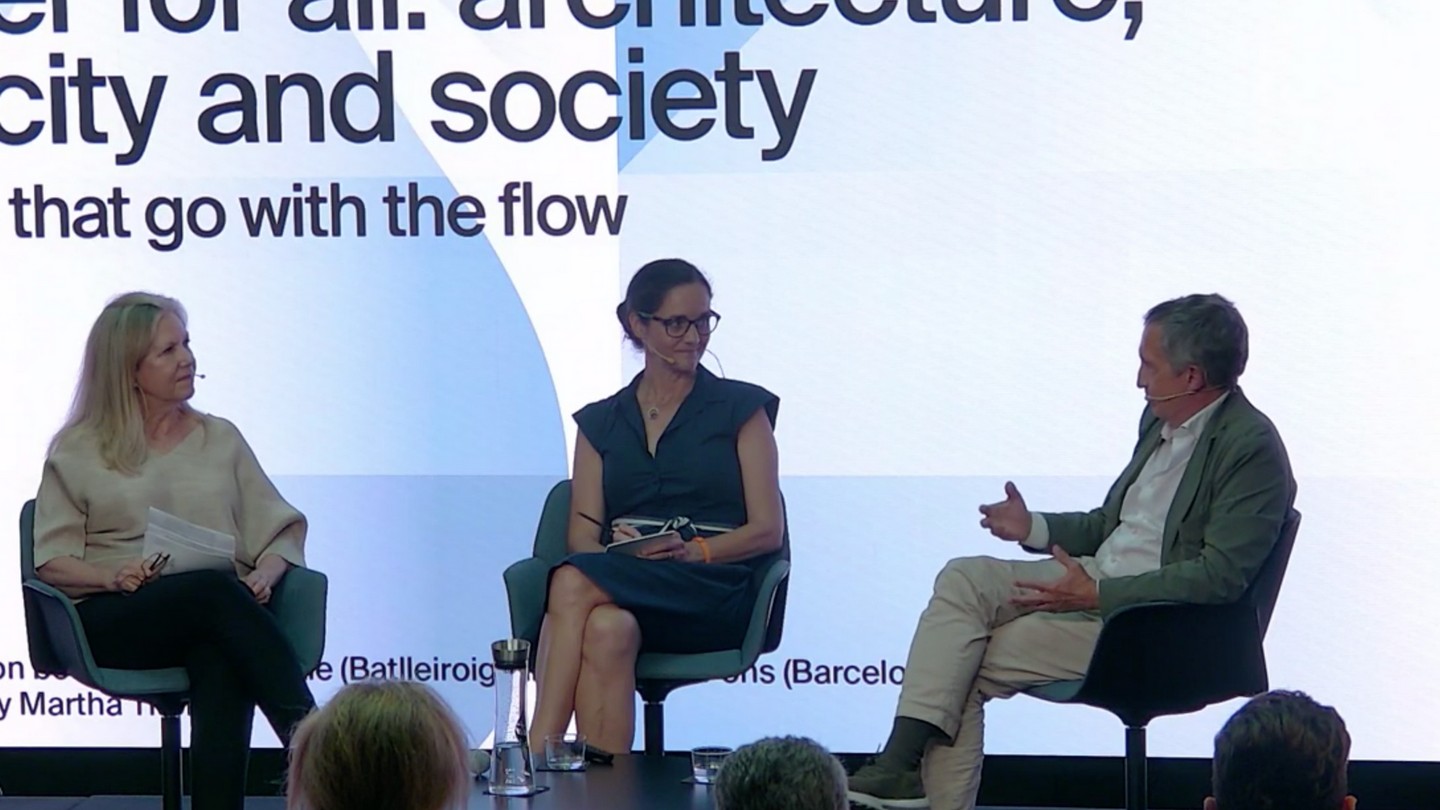
Dos expertos en la introducción del agua en los planes urbanísticos protagonizaron el primer debate: Bárbara Pons, directora general de Barcelona Regional, y Enric Batlle, cofundador de Batlle i Roig.
This new approach to urbanism is crucial to achieving SDG 11, making cities—where 80% of the global population is expected to live by 2035—more inclusive, safe, resilient, and sustainable. Water is the key.


